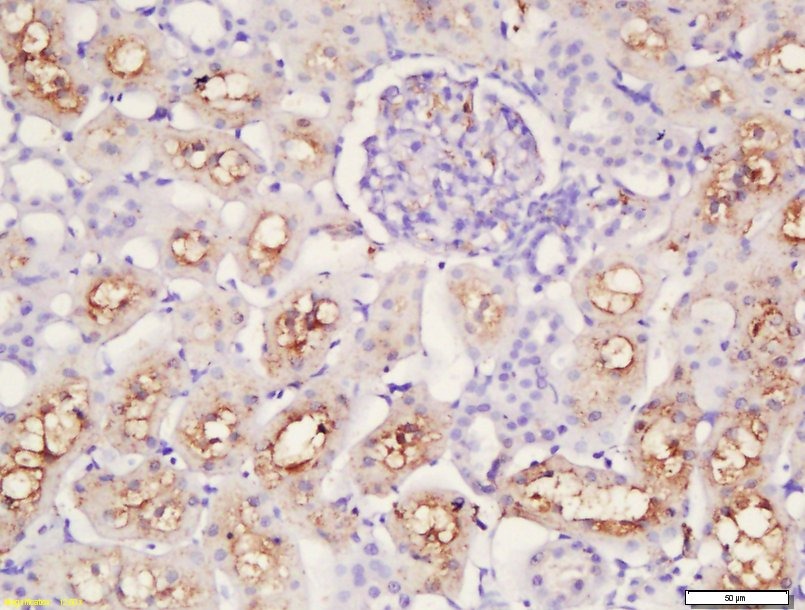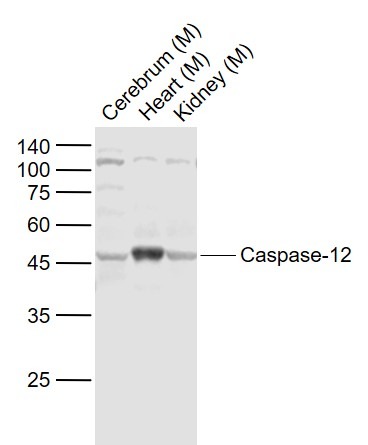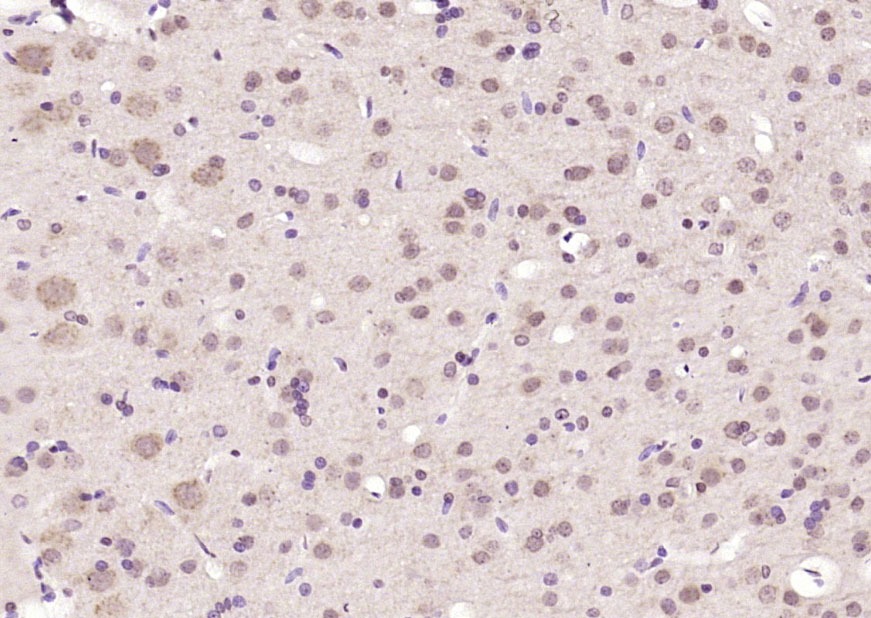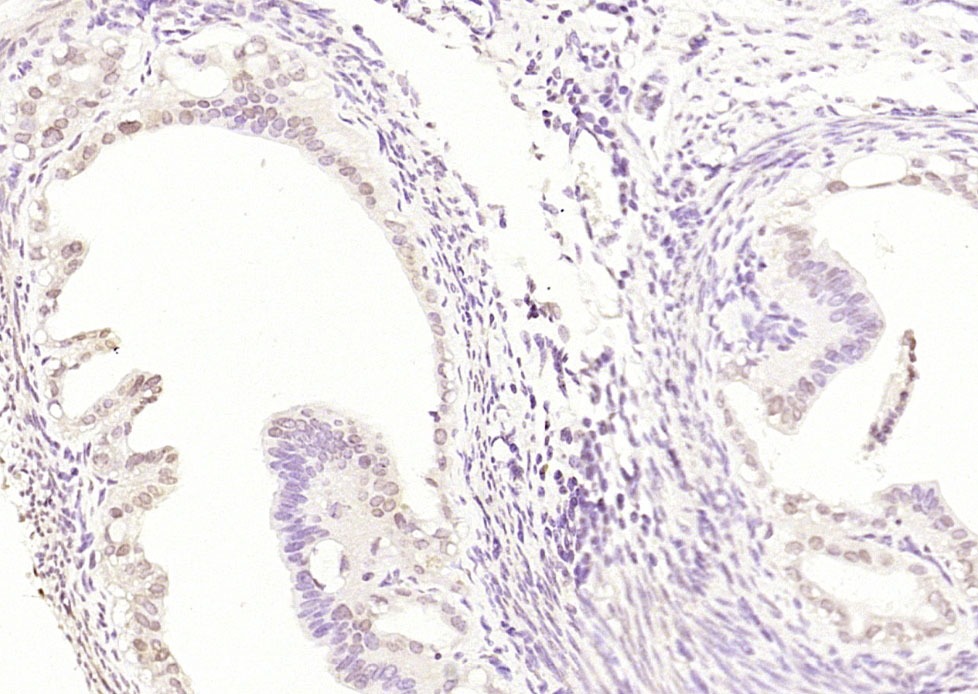Shopping Cart
Remove All Your shopping cart is currently empty
Your shopping cart is currently empty
Anti-Caspase-12 Polyclonal Antibody is a Rabbit antibody targeting Caspase-12. Anti-Caspase-12 Polyclonal Antibody can be used in IF, IHC-Fr, IHC-P, WB.
| Pack Size | Price | USA Warehouse | Global Warehouse | Quantity |
|---|---|---|---|---|
| 50 μL | $222 | 7-10 days | 7-10 days | |
| 100 μL | $372 | 7-10 days | 7-10 days | |
| 200 μL | $528 | 7-10 days | 7-10 days |
| Description | Anti-Caspase-12 Polyclonal Antibody is a Rabbit antibody targeting Caspase-12. Anti-Caspase-12 Polyclonal Antibody can be used in IF, IHC-Fr, IHC-P, WB. |
| Synonyms | UNQ9415, OTTHUMP00000219058, OTTHUMP00000207032, OTTHUMP00000207031, OTTHUMP00000207028, OTTHUMP00000207026, CASPC, Caspase12, caspase 12(gene/pseudogene), Caspase 12 pseudogene 1, CASP12P1, casp12, CASP 12, Apoptosis related cysteine protease |
| Ig Type | IgG |
| Reactivity | Mouse,Rat (predicted:Human) |
| Verified Activity | 1. Tissue/cell: rat kidney tissue; 4% Paraformaldehyde-fixed and paraffin-embedded; Antigen retrieval: citrate buffer (0.01M, pH6.0), Boiling bathing for 15 min; Block endogenous peroxidase by 3% Hydrogen peroxide for 30 min; Blocking buffer (normal goat serum) at 37°C for 20 min; Incubation: Anti-Caspase-12 Polyclonal Antibody, Unconjugated (TMAB-00284) 1:200, overnight at 4°C, followed by conjugation to the secondary antibody and DAb staining. 2. Sample: Lane 1: Cerebrum (Mouse) Lysate at 40 μg Lane 2: Heart (Mouse) Lysate at 40 μg Lane 3: Kidney (Mouse) Lysate at 40 μg Primary: Anti-Caspase-12 (TMAB-00284) at 1/1000 dilution Secondary: IRDye800CW Goat Anti-Rabbit IgG at 1/20000 dilution Predicted band size: 45/52 kDa Observed band size: 46 kDa 3. Paraformaldehyde-fixed, paraffin embedded (rat brain); Antigen retrieval by boiling in sodium citrate buffer (pH6.0) for 15 min; Block endogenous peroxidase by 3% hydrogen peroxide for 20 min; Blocking buffer (normal goat serum) at 37°C for 30 min; Antibody incubation with (Caspase-12) Polyclonal Antibody, Unconjugated (TMAB-00284) at 1:200 overnight at 4°C, followed by operating according to SP Kit (Rabbit) instructionsand DAB staining. 4. Paraformaldehyde-fixed, paraffin embedded (mouse fallopian tube); Antigen retrieval by boiling in sodium citrate buffer (pH6.0) for 15 min; Block endogenous peroxidase by 3% hydrogen peroxide for 20 min; Blocking buffer (normal goat serum) at 37°C for 30 min; Antibody incubation with (Caspase-12) Polyclonal Antibody, Unconjugated (TMAB-00284) at 1:200 overnight at 4°C, followed by operating according to SP Kit (Rabbit) instructionsand DAB staining.     |
| Application | |
| Recommended Dose | WB: 1:500-2000; IHC-P: 1:100-500; IHC-Fr: 1:100-500; IF: 1:100-500 |
| Antibody Type | Polyclonal |
| Host Species | Rabbit |
| Tissue Specificity | Detected in heart, kidney, liver, lung, pancreas, small intestine, spleen, stomach, thymus and testis. |
| Construction | Polyclonal Antibody |
| Purification | Protein A purified |
| Appearance | Liquid |
| Formulation | 0.01M TBS (pH7.4) with 1% BSA, 0.02% Proclin300 and 50% Glycerol. |
| Concentration | 1 mg/mL |
| Research Background | Caspases are cysteine proteases that cleave C-terminal aspartic acid residues on their substrate molecules. This gene is most highly related to members of the ICE subfamily of caspases that process inflammatory cytokines. In rodents, the homolog of this gene mediates apoptosis in response to endoplasmic reticulum stress. However, in humans this gene contains a polymorphism for the presence or absence of a premature stop codon. The majority of human individuals have the premature stop codon and produce a truncated non-functional protein. The read-through codon occurs primarily in individuals of African descent and carriers have endotoxin hypo-responsiveness and an increased susceptibility to severe sepsis. Several alternatively spliced transcript variants have been noted for this gene. [provided by RefSeq, Feb 2011] |
| Immunogen | KLH conjugated synthetic peptide: the middle of human Caspase-12 |
| Antigen Species | Human |
| Gene Name | CASP12 |
| Gene ID | |
| Protein Name | Inactive caspase-12 |
| Uniprot ID | |
| Biology Area | Caspases,Metabolism,Caspases,Caspases,Other proteases,Apoptosis,Proteases |
| Function | Has no protease activity. May reduce cytokine release in response to bacterial lipopolysaccharide during infections. Reduces activation of NF-kappa-B in response to TNF. |
| Molecular Weight | Theoretical: 46 kDa. |
| Stability & Storage | Store at -20°C or -80°C for 12 months. Avoid repeated freeze-thaw cycles. |
| Transport | Shipping with blue ice. |
| Size | Quantity | Unit Price | Amount | Operation |
|---|

Copyright © 2015-2026 TargetMol Chemicals Inc. All Rights Reserved.